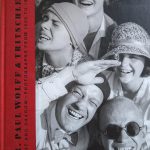Ernst Leitz Museum Wetzlar Paul Wolff animal images Tiere in schönen Bildern Die Blauen Bücher
Dr. Paul Wolff’s animal images in picture books, taken at zoos in Hamburg, Frankfurt, Hanover and Berlin. Photography of the 1920s, with the likes of László Moholy-Nagy entering the scene.mages of animals by Dr. Paul WolffAnimal images by Dr. Paul Wolff
Dr. Paul Wolff & Tritschler. Light and Shadow – Photographs from 1920 to 1950. © 2019 Kehrer Verlag Heidelberg Berlin, authors, artists and photographers [and translator]. ISBN 978-3-86828-881-0
Published at Kehrer Verlag. Editor Hans-Michael Koetzle. Translator Alexandra Cox. The respective word count in the book is indicated for each essay (for reasons of concision, I omit the endnotes, but they are included in the word count).
Paul Wolff’s animal images From: All His Pictures Have Something Light
by Hans-Michael Koetzle. Translated from German by Alexandra Cox.
30,063 words
It could not have escaped Langewiesche [Wolff’s publisher] that the photographic world had changed by the mid-1920s—with the likes of Moholy-Nagy entering the scene, books by authors such as Karl Blossfeldt or Albert Renger-Patzsch, as well as a more dynamic visual vocabulary in the illustrated magazines. For example, the animal pictures sent in by Wolff and brusquely rejected by the publisher just one year before—“the volume was supposed to be called ‘Animals in Lovely Pictures’, not ‘Animals in Traumatizing Pictures’”—became, practically overnight, the occasion for a letter addressed by Langewiesche to Paul Wolff in March 1929: “I am coming to you with my request because, last summer, some of your monkey-shots made a particularly strong impression on me.” What followed was the assignment “to create an animal book and record animals in zoological gardens”, in which process the publisher reportedly granted him a “free hand”. Wolff took photographs in zoos in Hamburg, Frankfurt, Hanover, and Berlin, as well as “at the well-known animal dealer Ruhe in Alsfeld”, in the process “lurking hours upon hours outside the cage bars”. Under deployment was a Mentor single-lens reflex camera, the products of which were, like all of Wolff’s glass negatives, destroyed in the war. It is possible that there were differences of opinion with regard to the book concept, or respectively with regard to artistic conception: “I fought for every large animal face,” Wolff writes in his autobiography, and “had it been up to me, the book would have contained nothing but animal faces.” This was a view that actually matched that of the publisher. What they wanted to do now, according to Langewiesche, was have the predecessor Tiere in schönen Bildern, which had been drawn from various sources, followed by an illustrated author’s book that contrasted “the traditionally pictorial animal shots of 1922 with pronouncedly photographic ‘character studies’”. Langewiesche wrote to his author, Walter Müller-Wulckow: “I am currently working on an animal picture book, which is going to be quite extraordinary, in rather grand style with Dr. Wolff.”
Die Blauen Bücher Ernst Leitz Museum WetzlarIn addition to making his name through picture books such as Tiere in schönen Bildern, Dr. Paul Wolff shaped the image of pre-war Frankfurt am Main. Click on the poppy to read more from:
Dr. Paul Wolff & Tritschler. Light and Shadow. Publisher Kehrer Verlag. Editor Hans-Michael Koetzle. Translator Alexandra Cox![]()
